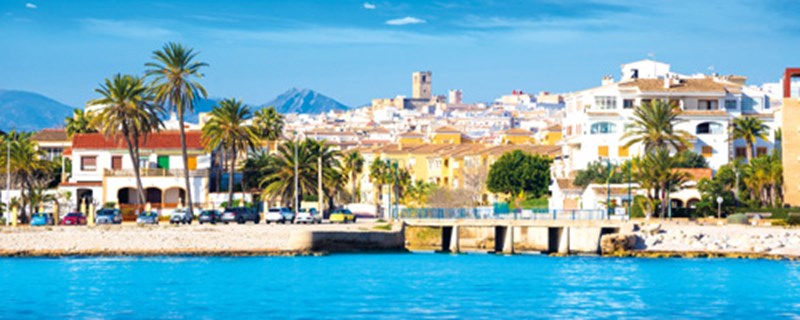
Read an updated version of this article published in 2021 here
Property market commentator Nigel Lewis looks at the fascinating interplay between both the UK and Spain.
Have you noticed the good news coming out of Spain? It's been hard to miss as almost every newspaper, estate agent and expert has been waiting to shout about the moment after nearly eight years of recession.
If you haven't then here it is: prices and demand for property in Spain have begun to rise again. For example, estate agent Engel & Volkers sold over 1,000 properties in Spain last year, up 77.6 per cent compared to the previous year.
But the question is, what happens next? One way to answer that question is to look at the UK property market, which is closely allied to the Spanish one. They're connected because it is British property equity (andmortgages) that continue to pay for purchases in many parts of the Costa del Sol, Murcia, Costa Blanca, Almeria, Costa Brava and the Balearic islands. Latest figures show that last year 17 per cent of all homes bought in these areas by foreigners were Brits - the largest group.
Consequently it can be a strong connection; take a look at the house prices from the UK's Land Registry and compare them with Spain's equivalent (the National Statistics Institute), and you can see the two journeys both markets have made together. Both hit the buffers at the same time -February 2008 - and although UK house prices dipped for a while (by nearly 20 per cent) our property downturn was much shorter and less painful than in Spain. For us the big drops lasted for only a few years, but in Spain they dragged on for eight years and were unremittingly severe.
The result? Prices in Spain have yet to regain their pre-2008 financial crisis levels, although regional results vary. But it's here that the British connection comes in again; the areas in Spain where house prices are catching up the fastest are those where Brits like to buy.
This includes Andalucia, Murcia and Valencia (Torrevieja, Alicante, Altea, Javea, Peniscola). All of these areas are now 20-25 per cent of their pre-crash highs, good going compared to inland Navarra (home to San Sebastian and Pamplona), where house prices remain half what they used to be. So it's reasonable to argue that Spain's prices, should they recover their pre-2008 levels, may rise by some 25 per cent as the market rebounds, helped by a reviving Spanish economy. Remember Spain's economic growth is currently running at 1.8 per cent and is predicted to top 2.4 per cent next year - almost the same as the UK's.
Great. But is the recovery in Spain even? Not really - all the official figures point to the Canary Islands as the main hotspot; the number of properties sold there has increased 20 per cent year on year, while on the Costa del Sol they are up by 6 per cent year-on-year. Holiday homes are a significant part of each region's housing stock.
Valencia is also reviving, according Spain's Ministry of Works, which says it and Catalonia (the region that includes Barcelona and Girona) are currently the most popular places for Brits to buy. But the undisputed star of the Spanish property market is Mallorca. Not only did it escape most of the pain during the hardest years following 2008, but as the economies of northern Europe, and in particular the UK, have recovered so sales have on the island too. One agent tells me they sold 43 per cent more properties on the island last year than they did in 2013.
To add to all this good cheer, there's the exchange rate on gas mark 10 in the background. The euro rate has leapt from around €1.16 to the pound at the start of 2013 to €1.4 as I write - so for example a €400,000 Spanish property bought in March 2014 would cost £334,756. That same property today would cost you just £285,111, a saving of £49,645.
The last connection between Spain and the UK's property markets is the world of prime property. Upmarket hotspots such as Estepona and Marbella on the Costa del Sol suffered only temporary hiccups during the bad years much like the expensive parts of London and the South East of England but helped in Spain by the 'Golden Visa' scheme.
This gives non-EU residents who invest more than half a million euros in Spanish property automatic residency in the country and - it's been suggested - long term residency if they invest further funds. The scheme has encouraged Russian, Chinese and Middle Eastern buyers to Spain's cities and coastal resorts - 530 of them at the latest count. And to a certain extent has helped push up average prices overall, something the UK has experienced too. So how will the UK election affect the British buying in Spain? Time will only tell...
(This article was first published in A Place in the Sun Magazine - Summer 2015 issue 122)

